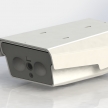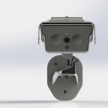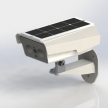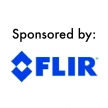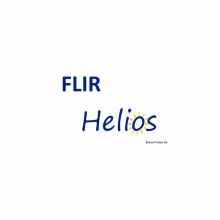
FLIR Helios
A Brighter Security Solution for Peace of Mind
Description
All security cameras that dominate the market have wires. Due to the need for cable routing, installation costs make security systems too expensive for most consumers. However, current cableless options, such as the EyeTrax Ranger system, cost upwards of $2,000, not including monthly cellular data connection fees. The FLIR Helios is a cableless low-cost alternative to these security cameras. The Helios system integrates solar power and WiFi capabilities to remove nearly all cabling.
The low power infrared (IR) Lepton and the FUJI visual cameras allow the Helios to provide 24/7 security, while being powered solely by the sun. Advanced solar and battery technologies can power the Helios for up to 10 continuous hours of operation. When not streaming video, the Helios enters a low-power sleep cycle to conserve energy. By implementing a passive infrared (PIR) sensor to wake the system, the Helios can go up to 40 days without sunlight, while operating for 15 minutes a day. The WiFi allows for wireless communication without the monthly subscription costs associated with cellular data. In addition, a web and Android application give the customer the opportunity to view a live stream or 80 hours recorded video. The Helios system sells for about $500 and due to its simple installation the secondary costs are negligible.
These revolutionary aspects about this product are what excite this team most on both the ME and ECE side. In terms of the Computer Engineers, the most difficult aspect of the project has been working with the THOR Board provided by FLIR as it is a very complex, multiprocessor board that has forced the team to learn new ways of coding and problem-solving over the past three quarters. Also, there are a lot of unique software challenges, such as the sleep and wake cycles, and the creation of web and android app interfaces which can livestream both the visual and IR recordings.
As for the Electrical Engineers, the main challenges were the different board designs required for this project. A power board was created to avoid having to use separate modules for the solar panel controller, DC-DC converter, and the battery power monitor. Also, a board design for a MIPI flex cable had to be created in order to connect the cameras to the THOR board so that the THOR board could lie flat on the camera bottom to allow for better heat-sinking while the cameras face out the front of the camera.
On the Mechanical Engineering side, water proofing the camera housing to IP67 standards while designing it to be injection-moldable, cheap, and thermally stable proved challenging. The difficulty of having to account for so many types of design failure was an eye-opening experience to the entire team about the technical difficulties of packaging and design for manufacturing.
The goals of the project are to meet all the specifications listed above in the first two paragraphs, as those are what the team has been working hard to achieve throughout this year, and it is those same technical difficulties which make this project both interesting and challenging to all team members.


